-
Posts
407 -
Joined
-
Last visited
Content Type
Profiles
Forums
Articles
Gallery
Downloads
Events
Posts posted by Pr3ssure
-
-
Most of what I've read about this topic is saying 1080 and 1084, I'm sure I'm beating a dead horse here so bare with me.
So I'm wondering what kind of steel they use on the various parts on rail road tracks, like the spikes, plates they lay track on and everything else. I'm asking because about less than a mile from my house they put all the old stuff when they replaced the tracks many years ago. It's been there for probably ten years and a train hasn't come down the tracks in probably 4 years or so. I'm very new to blacksmithing and would just like to know what the carbon content may be so I could know what I could use the pieces for. Granite I know it's illegal to take the stuff, but there's probably 10 ton of the stuff in a few giant piles and that's not counting the 4 piles of actual track that's there too. I just want to take a few pieces of each thing and probably a few dozen spikes to have some good practice steel. I need to get my grinder so I can try and cut the big plates into strips of square/rectangle. I know I can grind the stuff and get a general carbon content from sparks but I'm just wondering if anyone actually knows what they used.
MOD note This is a crime, do not do it
-
On 11/13/2017 at 2:02 PM, ThomasPowers said:
Local folks, often the miners themselves, tended to use whatever they could get free or very cheap from the local mines. If the local mine was hard coal then they used hard coal, if it was soft coal then they used soft coal. I didn't dig deep into what the mines there produced...But some of the best smithing coal in the world is from that area and it's sure a lot closer to you than folks like me! (its about 200 miles just to get from my southern abode to my northern one and that's in the middle of the state! (418 miles to get from El Paso to Raton---both border towns)
Yeah, I have like 3 mines within 20 minutes of me. Consol #2 is like a mile away, Consol #1 a mile the other way but it blew up in the 90s. Then Peabody isn't far. I'm gonna goto them all and get a few buckets and see what's best for me I guess. Someone just picked me up a bag of coal from Lowes and xxxx was it hard to light, but it made the metal glow the brightest I've ever seen. I just wish the train still went by the tracks beside my house, used to be littered with cole when it did. Now it reroutes through PA up from my house.
On 11/13/2017 at 8:56 PM, Judson Yaggy said:Unless you are only working outside (and perhaps even then) you will need a hood/chimney to work with coal. Coal smoke is bad for you, specifically for your lungs, and bad for your tools as it will make them rust faster than normal.
Making a quality tool be it a hood or a hammer is worth the effort in the long run. Do your research, do your best to build it, and be proud. Shortcuts in this trade lead to frustration at best and injuries at worst.
Yeah, for now i'm just gonna be outside until I acquire enough stuff and knowledge to want to throw down a nice sized slab in my yard and build a shop. By then I hope to just have a welder and make a propane setup.
-
1 minute ago, ThomasPowers said:
Pocahontas #3 or Sewell seam? In coal mining areas there is usually a way for locals to buy coal for heating their houses. Ask around!
Get a 5 gallon bucket and try it; or better have an experience smith try it and rate it for you.
You can smith with amazing bad coal; it's just a horrible degrading experience...
Yeah, I need to look up how coke is made from coal. From what i know so far isn't it just basically baked in an oven to remove impurities almost like making charcoal from wood? or something of the sort. 'Cause I'm sure the coal for heating houses will put off a lot of smoke and I'd rather not have to build a hood/chimney as well.
-
1 hour ago, ThomasPowers said:
Finding coal in West Virginia should not be difficult. Besides asking around a simple web search on where to buy coal in West Virginia turned up a bunch of hits. Shoot you can probably even buy good smithing coal there!
I note that several coalmines were in Blacksville so that must have been a joke...
Yeah, it's a cola mining town. I just didn't know if I could actually go there and buy coal. I really want to find actual smithing coal or coke though.
-
42 minutes ago, Irondragon Forge & Clay said:
Yes a wire wheel will remove the paint without damaging the anvil. A cupped wire brush is best.
Awesome, I found a nice pack of them on the Lowes website they have in my area lowes and I'm getting them tomorrow. Now I need to figure out where to get coal/coke so I'm not using wood.
-
11 minutes ago, beaudry said:
Don't grind on it, Just strip the paint off if you want and oil it.
Using it will smooth it out . You can actually peen that one edge back cold with a hammer . The tip of the horn and any dings can be dressed with a hammer as well
The hard face plates on those old english anvils are usually pretty thin [ maybe 3/8'' or so ]
Mount it solidly to a base anchored into the floor with the top about wrist height and you are good to go.
I like to have a solid timber base slightly smaller that the length of the footprint of the anvil. Orient the grain of the block vertically. This can be one solid piece or built up from smaller timbers.
Through bolt two pieces of heavy flat bar [ 1/2' x 6'' maybe ] on each side of the block with the top 1'' of the edge of the flat bar pinching the feet of the anvil.
This will hold it really tight to the block and kill the ring at the same time. Loosen the bolts to remove or reorient the anvil on the block.
If you are lucky enough to have a dirt floor in your smithy, cut the block long enough to bury it about two feet deep . Pour a couple of inches of concrete in the bottom of the hole , set the block in and fill the hole around the block with more concrete . Bring the last few inches up to finish grade with dirt.
If you have a concrete floor, make a base for the block with some angle iron and anchor it into the floor with concrete anchors drilled into the slab. Lead lag shields will enable you to unbolt it and move the block around if you change your mind or need to get it out of the way.
With this method you can stand right up next to the anvil in any position for the most effective stance.
Having an anvil mounted solidly so that it doesn't move at all will mean that every hammer blow goes into the work instead of pushing the anvil around.
Mocking up the location and height and orientation of the anvil will help you get it right the first time.
Thank you very much. How should I go about removing the paint? Would a wire wheel on a drill be good without damaging it?
-
So after someone suggesting my anvil looks like a Peter Wright I was able to identify it as such. This is exciting finding out the history of my anvil. I believe it to be pre 1911 because I'm not seeing the England stamp on it that was required after 1910. Also after figuring out the hundredweight system it's 161 pounds.
Does anyone have any recommendations on anything I should do before I work on it, such as removing the paint, which I would like some tips on how to do. Probably gonna get a wire wheel attachment for my drill to do so unless someone has a better way. Any other suggestions for maintenance or whatever would be greatly appreciated.
Here's my last post to see all the pictures
-
After looking up peter wright anvils and comparing the markings to mine I can make out that it does say Peter I cant make out the wright but i can make out Patent under it. I'm not seeing the England stamp on it either so it may be pre 1910-11 from what I've read. This is exciting figuring out my anvils origins.
-
44 minutes ago, beaudry said:
Thank you, I actually just found a forum about the hundredweight system but it was confusing to me. That is much more simple than what I was reading.
-
Thanks to the admin or whoever removed the original post i put in the wrong forum. I was having trouble doing it.
No worries, we are here to help
-
So I am very new to blacksmithing, in that I haven't really done much of it. Although a few months ago after building a forge I went and purchased an anvil. I didn't know how much it weighed at first, the smith who sold it to me probably told me, but I saw 1 1 2 imprinted on the anvil and assumed that was the weight. Turns out I think it actually says 1 1 21 which may be the date? I'm not sure. Anyway it's a 155 pound pretty positive wrought iron anvil with a steel face. It has a few small pits on the face and one decent chip between the hardy and pritchel, and one side is pretty indented, but for me and what I paid it's more than perfect. I need to get the paint off to try and identify the other imprints on it but I don't know how. Incase anyones wondering I paid $300 which turns out to like $1.93/lb which with the wear on it I think is fair, if anything the smith gave me a first timers deal. At the very least it's market value so he wasn't trying to rip me off like the others.
And yes, I'm pretty sure he told me what the maker was but I don't really want to call and bother him for something so menial. Plus I love the input on this site.
-
So i've been slowly acquiring everything I need to start smithing, I made a home made forge out of a 22 gallon drum. It needs a little work but it does the job fairly well. I've only used wood in it, I'm wondering where I can get coal or coke, I live in a town called Blacksville, called that because it's a cola mining town. So I can probably just goto the mine and buy some if anything but I'd like to know where to get coke at. I'm in northern West Virginia near Morgantown. Also where can I get a hand blower other than the internet? There is a blacksmith about an hour away from me I got my anvil from and I'm pretty sure he has some. Just wondering if they sell them at any kind of stores.
-
I'm just looking for info on blacksmiths in or around my area. I'm near morgantown, I know of Atlas Forge in uniontown and Hoffmann up in albright. Just seeing if anyone else in the surrounding areas.
-
I appreciate the help guys, I've made a basic solid furl forge with a 20 gallon drum and a pipe and hair drier I all found in my shed. Used s rock and 3lb mini sledge to flatten out a lawn mower blade. Once I get a hammer and something completely flat to beat on I think I'll be on my way to making something.
-
4 hours ago, ThomasPowers said:
I tell my beginning students to choose the heaviest hammer that they can swing WITH CONTROL for a long period of time. If you can't control it your mistakes will eat up the time saved by using a heavier hammer *FAST*!
Also too heavy a hammer can lead to blacksmiths elbow and other RSI. Please don't get real excited about smithing and then mess up your arrn and not be able to do any for *MONTHS* while it heals.
Good advice, thanks
-
1 minute ago, Glenn said:
Head weight.
Alright, I assumed so. Thank you much.
-
Probably a dumb question but I am a noob and couldn't seem to find this anywhere. But do the hammer weights include the handle or is it just the head?
-
Well just in the first 2 pages my hammer questions were answered, thanks for point me in the right direction and not bashing me for being lazy. Greatly appreciated.
-
6 minutes ago, Glenn said:
Again, you may want to look at the hammer section of the site. Only 548 topics in this forum. What did they suggest when you read the hammer section?
I didn't even see the hammer section, I must have kept looking over it. I've been reading on here randomly for about a week and just made an account. Maybe I should have looked harder.
"Opens new tab"
-
4 minutes ago, Marc1 said:
Agree, particularly with the 2 lb. Unless you're built like a tank, avoid the 4 lb and even the 3lb for now.
Alright, I'm a fairly small person. So 2 pounds should do. And would a straight or cross peen hammer be better?
-
9 minutes ago, Glenn said:
Look up the Pennsylvania blacksmithing groups and go to the meetings. Your not that far from Pittsburgh. A day at the meeting will answer most of your questions, and then some. They will also have used tools for sale.
Yeah, I'm about an hour away from Pittsburgh. So I'll have to look into when there are meetings. I'd love to find a nice used anvil at a reasonable price. My dad's boss has one he might be able to get for free or very cheap but it's just been sitting for a decade and may be no good. He's a truck driver though and goes from Ohio to New York so I told him to check out some flea markets.
Thanks for the tips though, much appreciated.
-
So I'm getting into bladesmithing, slowly getting everything I need. I was wondering about hammers. I seem to have figured out I probably need 3 hammers for a good set, ranging between 2 and 4 pounds. I wanted to know what the real difference in styles are. I found a site with french, german, Nordic and Czech style. All ranging in price from about $30 to $100 in all weights. Is there a performance difference in the styles or just a preference?
Also would a hammer from Lowe's or Sears not meant specifically for forging work if it's the right weight and shape? Or would they just muck up the blade. I would just like to get a few hammers for a good price I'm not going to want to replace immediately and regret not spending a few more dollars. I know if I stick with it I will get a nice expensive set with carbon handles but for a starter set, what's the cheapest I could go without regret?
I also need a belt sander, haven't looked into the specs I would need/want. What are some good recommendations as far as belt length/width and style?
I appreciate any feedback, I'm sure there's forums about all this but I'm having trouble finding specific answers.
-Dylan

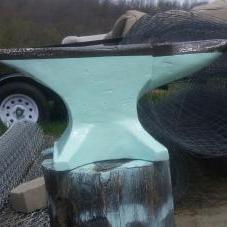
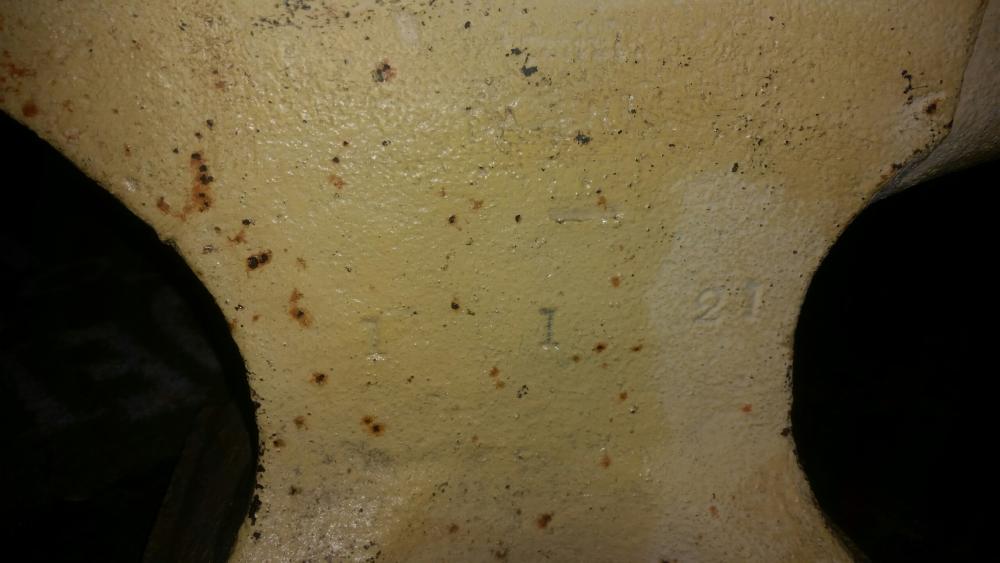
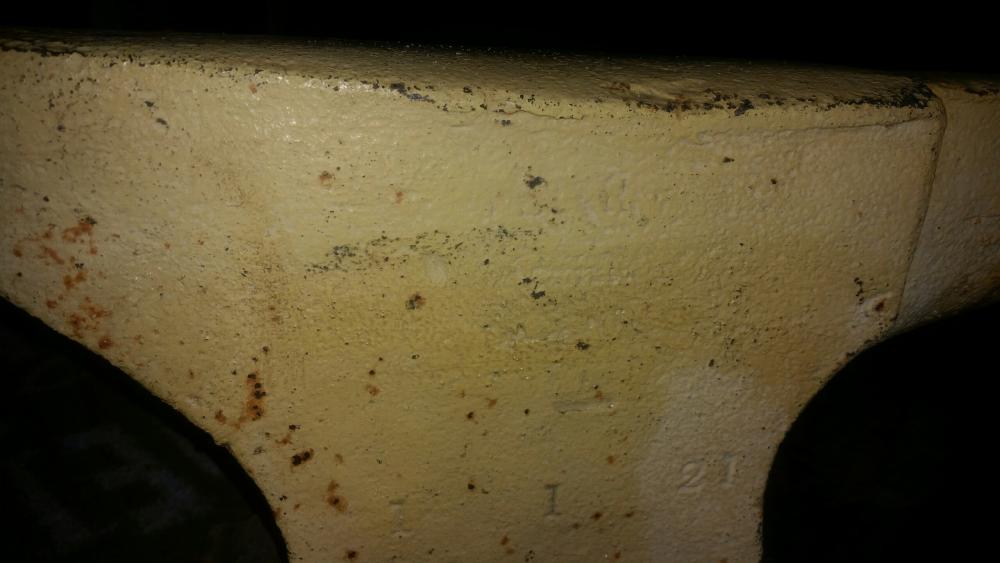
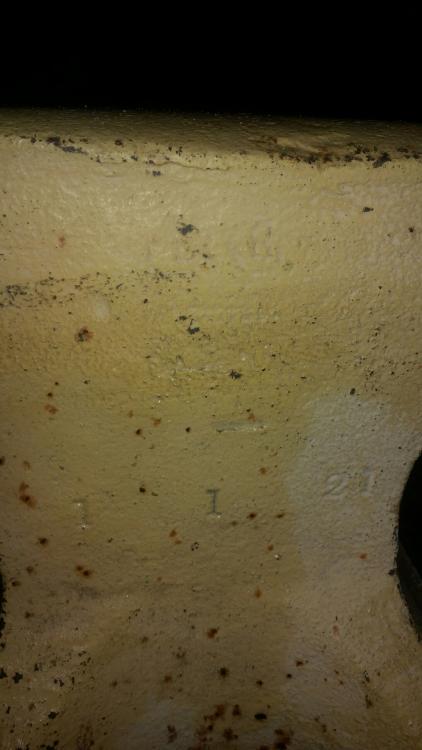
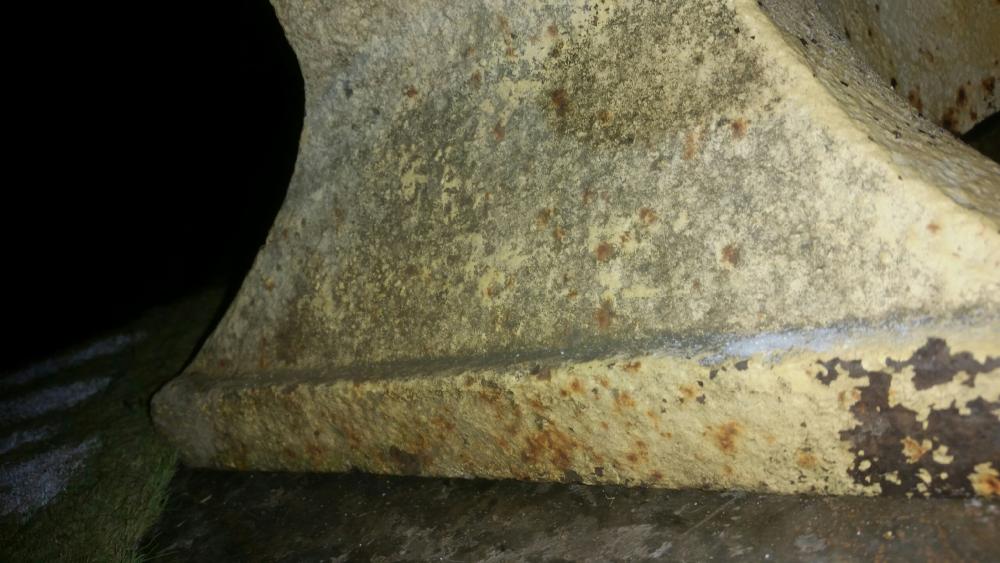
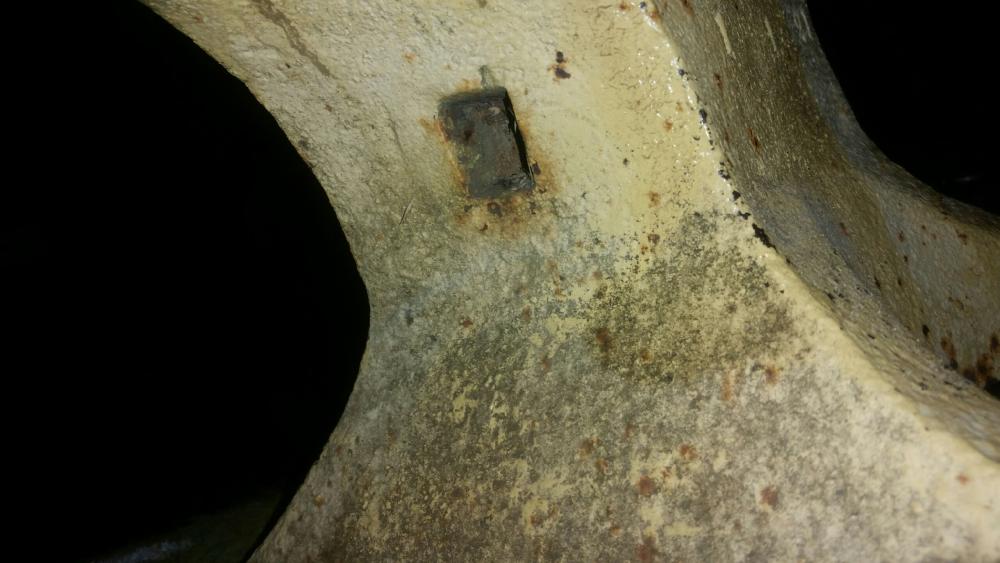
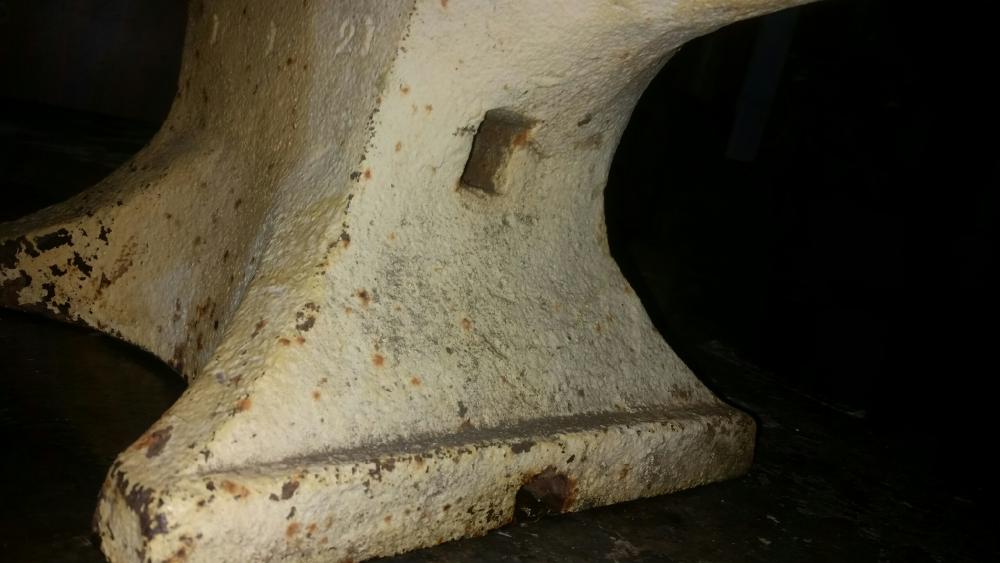
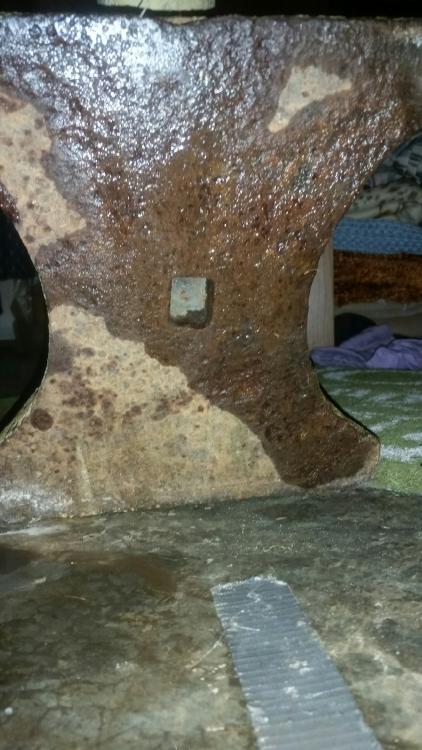
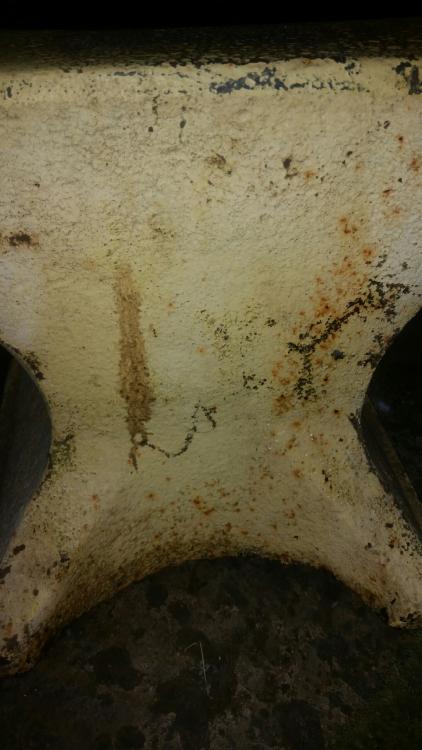
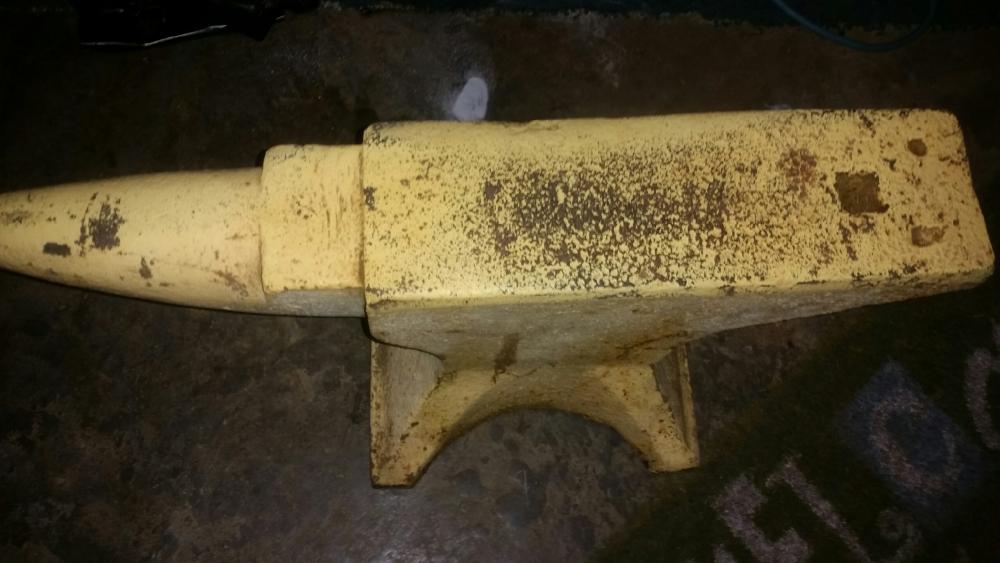
Peter Wright Anvil (My first anvil)
in Anvils, Swage Blocks, and Mandrels
Posted
I always find the best advice I get on here is the simplest. I did get some wire cup brushes and remove as much paint from the face as I could and some off the side so I can see the stamps in it. I want to get it all off eventually because I don't really like the yellow but who knows, I may grow to like it. I'm already in love with it, especially after figuring out the maker and a general age. I'm pretty sure it's from 1860-1880. So around 150 years old! I may be wrong but I know it's at least pre 1910.
I also got some steel handle wedges so I can set all the hammer heads I found in my dads shed. He said they were his grandfathers and great grandfathers.